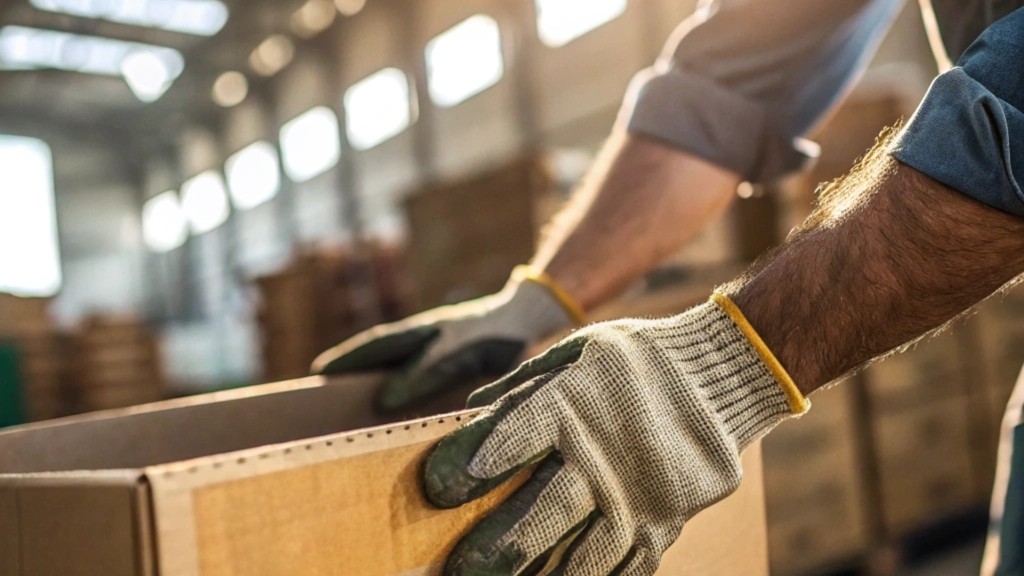
If you work in environments where sharp tools or materials are common, wearing cut-resistant gloves can prevent serious injuries. But when exactly should these gloves be worn? This article will help you understand when and why wearing cut-resistant gloves is essential to workplace safety.
Cut-resistant gloves should be worn when you are exposed to sharp objects or materials that could lead to cuts or abrasions. These gloves protect workers from potential injuries when handling metal, glass, or other sharp tools.
Working with sharp items can be dangerous, and knowing when to wear protective gloves can make all the difference. Let’s dive into the specific scenarios where cut-resistant gloves are a must.
When must you wear product-resistant protective gloves?
Protective gloves are necessary for various tasks, but when is it mandatory to wear them? Let’s explore the specific situations where gloves are required for safety.
You must wear product-resistant protective gloves when handling sharp objects, chemicals, or materials that pose a risk of cuts, punctures, or other injuries. These gloves are designed to safeguard against common hazards in the workplace, such as cuts from knives, glass, or metal.
Product-resistant gloves come in many forms, depending on the job you're doing. For instance, cut-resistant gloves are critical for workers dealing with sharp tools, while chemical-resistant gloves are necessary when working with harmful substances. It's essential to choose the right glove for the job.
When working in construction, manufacturing, or food processing, protective gloves should be a standard part of your personal protective equipment (PPE)1. Understanding the specific risks in your environment helps ensure that you are protected from injuries that could affect your productivity and long-term health.
What are anti-cut gloves used for?
Anti-cut gloves are designed to protect workers from sharp objects and materials that could cause serious harm. But what exactly do these gloves do, and how do they help?
Anti-cut gloves are primarily used to prevent cuts and lacerations when handling sharp items like glass, metal, or knives. These gloves are essential in industries like manufacturing, food processing, and construction, where workers frequently interact with sharp tools and materials.

The key advantage of anti-cut gloves is their ability to protect without sacrificing dexterity. Most are made from durable materials like Kevlar2, steel mesh, or high-performance fibers, offering excellent cut resistance. Some gloves also provide additional protection against punctures, abrasions, and extreme temperatures, making them ideal for a wide range of tasks.
In high-risk environments like food processing, workers use anti-cut gloves to handle knives and slicers safely. Similarly, warehouse workers rely on these gloves when handling glass, metal, or other sharp items, reducing the chances of accidental cuts.
When should you wear protective gloves?
Knowing when to wear protective gloves is crucial for preventing injuries in the workplace. But when are gloves absolutely necessary?
Protective gloves should be worn whenever you're exposed to environments where there’s a risk of cuts, punctures, burns, or chemical exposure. Whether you're working with sharp tools, chemicals, or machinery, gloves act as a barrier between your hands and potential hazards.
In construction, for example, protective gloves are a must when handling metal, glass, or power tools. Likewise, in warehouses or factories, gloves help protect against cuts from packaging materials and sharp equipment. Even in less obvious situations, like handling hot kitchen equipment or cleaning chemicals, gloves can prevent burns and chemical exposure.
Wearing protective gloves isn't just about safety; it’s about maintaining your ability to work without the risk of injury. Proper glove usage helps you perform tasks more confidently, knowing that you're safeguarded against common workplace hazards.
Who uses cut-resistant gloves?
Cut-resistant gloves are especially important in industries where workers regularly handle sharp tools or materials. But who exactly needs to wear them?
Cut-resistant gloves are used by workers in construction, food processing, manufacturing, and logistics, where there’s a high risk of hand injuries due to sharp objects.

In construction, for example, workers use heavy machinery and materials like glass and steel that pose a risk of serious cuts. Cut-resistant gloves offer essential protection in these environments, not just preventing cuts but improving grip and control while handling sharp items.
Similarly, in food processing, workers deal with knives and cutting equipment regularly. Here, cut-resistant gloves help reduce the likelihood of accidental injuries that could lead to downtime or costly medical bills. In manufacturing and logistics, workers are often exposed to sharp tools and materials, and wearing these gloves ensures safety and efficiency.
Whether you're a worker on a construction site or a chef in a kitchen, cut-resistant gloves are designed to protect hands from the dangers that come with working in high-risk environments.
Conclusion
Cut-resistant gloves are essential for anyone working in environments with sharp objects or materials. Whether you're in construction, manufacturing, or food processing, wearing the right gloves helps prevent injuries and ensures your safety on the job.
-
A link explaining PPE guidelines and why protective gloves should be a standard part of it in various industries like construction, manufacturing, and food processing.
-
This link will explain the benefits of Kevlar, a key material used in many cut-resistant gloves, and its advantages in protecting workers in high-risk jobs.

